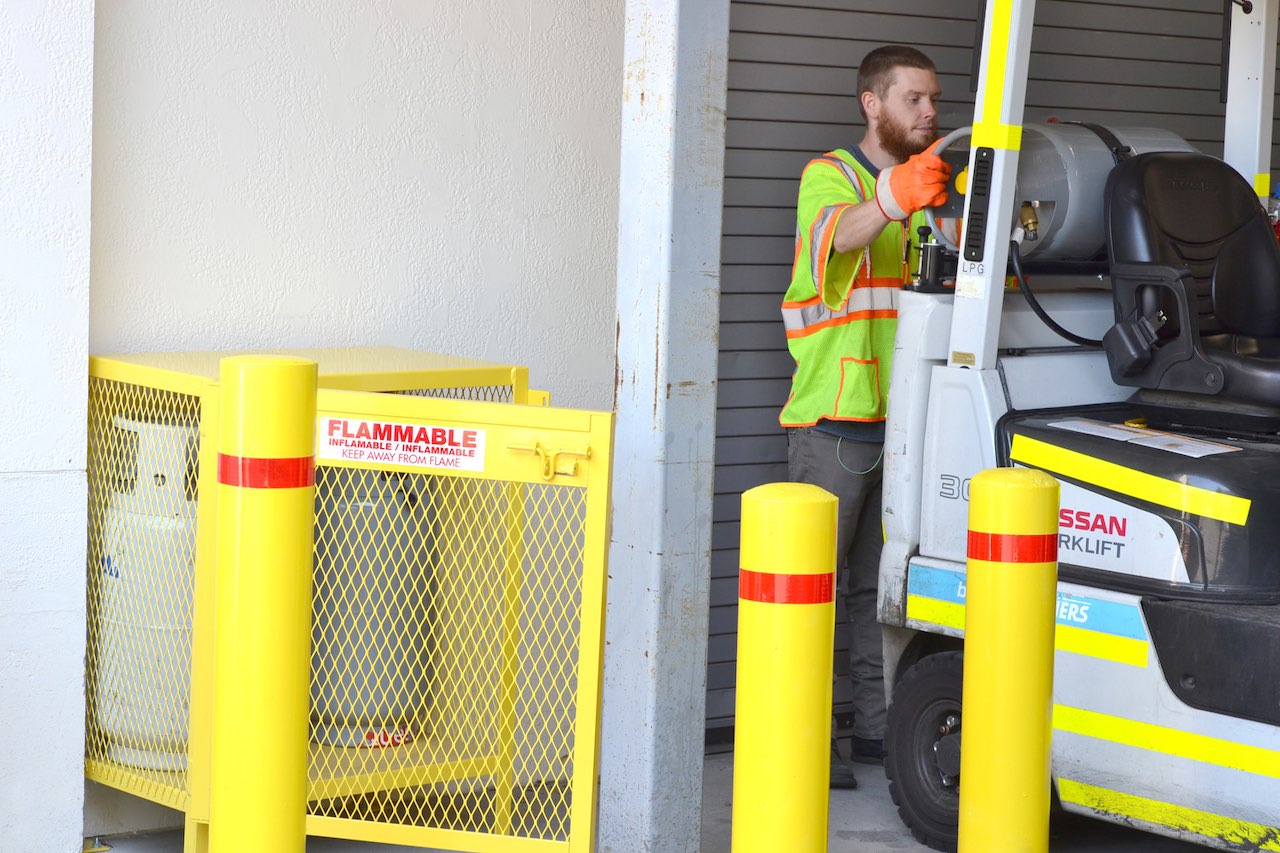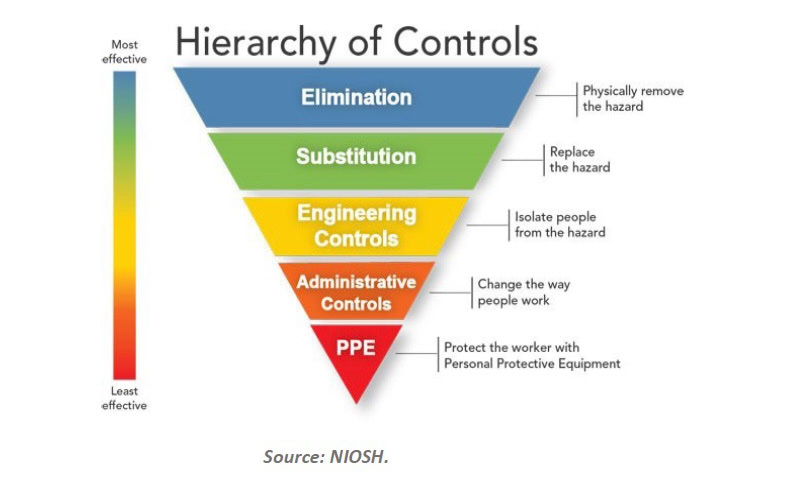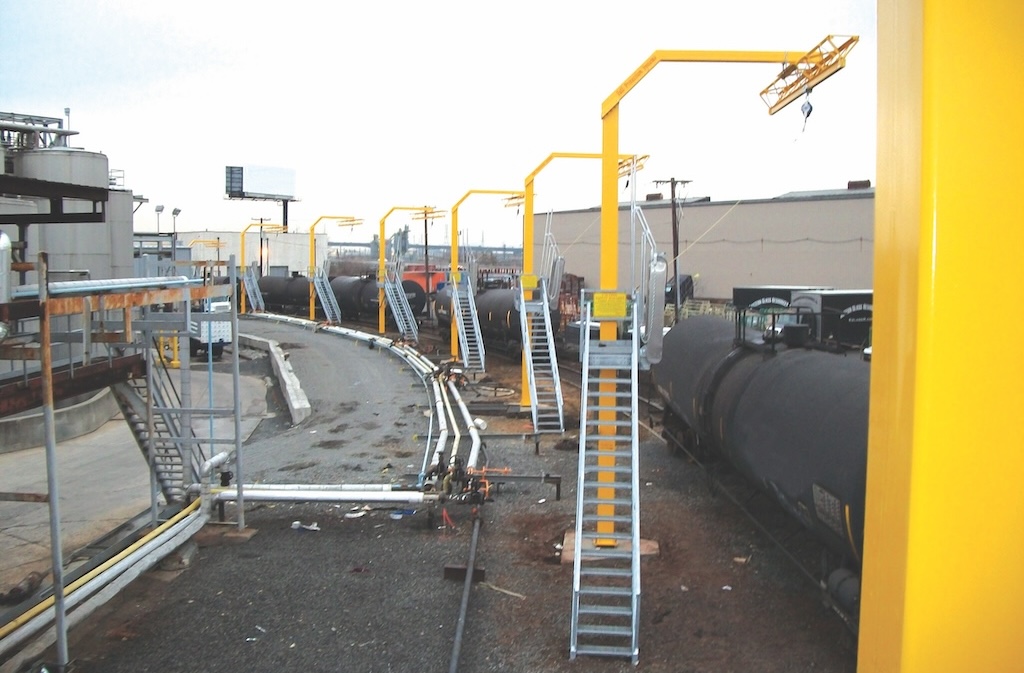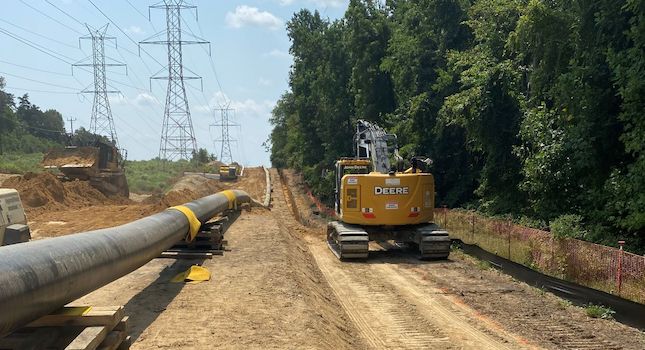Company’s choice of propane one part of its best practices

Graphic Products is in the business of safety. They manufacture industrial label printers and floor marking materials to keep modern workforces at the forefront of safety and visual communication. This includes the company’s own 77,500 square-foot campus in Beaverton, Oregon, where its commitment to safety throughout the facility enhances and protects its employees and brand value.
In fact, Graphic Products’ concern for employee safety is so important it’s the cornerstone of its mission statement: “to cultivate safety, efficiency, and communication in the workplace.”
That commitment to safety even reaches the type of equipment they use. As part of this, the company trusts its propane-powered forklift to help with their day-to-day operations.
Commitment to safe operations
Graphic Products means business when it comes to forklift safety operation. Proper training is at the forefront of employees’ ability to work safely day in and day out. Before any employees can drive, maintain or refuel forklifts, they are required to complete necessary training on OSHA standards for safe use, maintenance and storage of material handling equipment.
Continuous evaluation helps keep Graphic Products’ training fresh. In addition to having qualified individuals on site to conduct practical training under supervision, the company uses online training resources from CLMI Safety Training.
“Safety is our business, and when it comes to a safe workplace, we practice what we preach. Through safety in our own facility, we enhance and protect our brand value,” public relations specialist at Graphic Products, Christine Torres, said.
Forklift inspections are another integral part of Graphic Products’ safety foundation. Daily inspections, including brake tests, lights, horns, steering wheels, tires, fuel and oil levels, and checking for leaks, cracks or failing parts, and periodic inspections of fuel tanks and fuel storage areas help ensure safe operation.
When driving or lifting, designated drivers are careful to lift only balanced and secure loads, drive with the load as low as possible and maintain safe speeds and good visibility. Graphic Products’ forklift operators are always on the lookout for uneven surfaces, obstacles and other hazards that may come up on their operation path. Warehouse signs and floor markings help to separate trucks from pedestrian traffic, and designate clearance areas, lanes of travel, and safe parking or work locations.
Propane forklifts and safety
With its propane forklift, Graphic Products officials say they have addressed safety concerns such as additional electrical hazards from the daily use of recharging equipment required for electric forklifts, hazardous spills from gasoline and diesel fuel equipment or chemical spills from lead-acid battery-powered forklifts. Rather than swapping out heavy batteries from a recharging rack, employees refuel with 33-pound propane cylinders ready to go from a storage cage.
“Using electrical power for our forklift would mean dealing with additional electrical hazards, and depending on the battery type, we might also have to deal with hazardous chemical spills in the event of damage,” said Torres. “Diesel forklifts aren’t nearly as clean-burning as propane, which would cause problems for the people and products in our warehouse, and it’s much easier to avoid spills when you’re swapping standardized propane tanks, rather than pumping or pouring a liquid fuel.”
Its propane forklift also is used both inside the company’s well-ventilated warehouse and outdoors on loading docks because propane is a clean fuel. According to the Propane Education & Research Council (PERC), propane forklifts reduce greenhouse gas emissions by up to 16% for nitrogen oxide (NOx) when compared with their diesel and electric counterparts. They also reduce sulfur oxide (SOx) emissions by up to 17% when compared to gasoline-fueled forklifts. The PERC data also found the propane forklifts produce up to 76% fewer SOx emissions than electric-powered forklifts.
The company’s electric forklift is kept only as a reserve because it slows down during use, especially under heavier loads, and isn’t rated for outdoor work.
Beyond relying on these general safety advantages, the company has developed a strategy so that its forklift operators and managers start each day with safety top of mind.
The company’s commitment to safety, paired with the benefits of propane forklifts, continues to drive them toward their goals. Beyond their benefits in safety and sustainability, propane forklifts also improve productivity and performance, as well as reduce costs.



